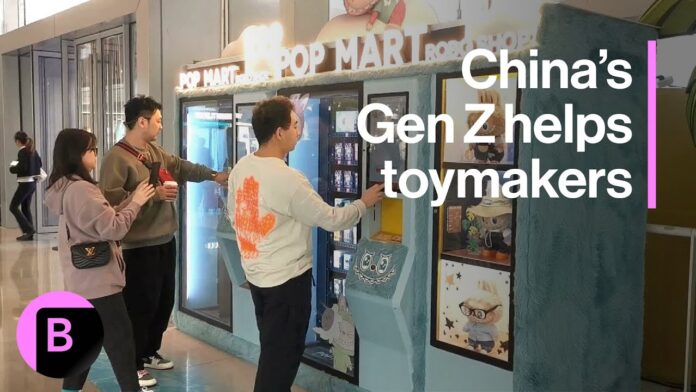China’s 280 million Gen Z consumers are reshaping the toy industry through emotional consumption, with the blind box craze highlighting their desires for excitement, nostalgia, and immersive shopping experiences.
Emotional Consumption Trend Among Gen Z in China
China’s 280 million Gen Z consumers are leading a shift towards emotional consumption, reshaping the toy industry. These young consumers prioritize products that resonate with their personal feelings, pushing manufacturers to innovate and meet evolving demands. The blind box craze exemplifies this trend, with tech-savvy Gen Z driving its popularity. Blind boxes offer collectible surprises, mixing nostalgia with a thrill of uncertainty and transforming shopping into an adventurous experience.
Impact of Social Media and Retail Strategies
Social media intensifies the blind box craze, as influencers showcase unique finds, fueling the desire for rare items. This marketing taps into Gen Z’s FOMO (Fear of Missing Out), enhancing the connection between online engagement and physical products. Retailers are responding by creating exclusive collections and artist collaborations to boost allure. The blind box market is growing, attracting collectors and changing consumer culture in China, as Gen Z seeks immersive experiences and instant gratification.
The phenomenon of blind boxes has captured the imagination and wallets of China’s Generation Z, becoming a cultural and economic juggernaut. These mystery packages, containing collectible items such as toys, figurines, or fashion accessories, tap into the thrill of the unknown, a concept that resonates deeply with young consumers. The allure lies in the surprise, often triggering a rush of dopamine as they rip open these boxes without knowing what lies inside. For Gen Z, this experience is akin to a modern-day treasure hunt.
The rise of blind boxes in China can be closely linked to the increasing spending power and changing consumption habits of the post-1995 generation. Unlike previous generations, these digital natives are driven by the need for novel experiences and possess a high tolerance for uncertainty, making blind boxes particularly appealing. They seek engaging, interactive experiences and are often more influenced by social media trends than traditional advertising. The communal aspect of trading or showcasing rare finds on platforms like WeChat and Weibo further fuels this craze.
Retailers have been quick to respond to this burgeoning demand, with numerous brands collaborating with popular franchises like Pokémon, Marvel, and Hello Kitty to create exclusive blind box collections. Shopping malls in major cities now boast dedicated blind box vending machines, while e-commerce platforms host limited-edition drops that sell out within minutes. Pop Mart, one of the leading players in this industry, has successfully capitalized on this trend by creating limited-edition figures with intricate designs, transforming mere toys into coveted collectibles.
While some critics argue that the blind box model promotes consumerism and potential addiction, supporters point to how it enriches the consumer experience, offering joy and camaraderie through shared interests and discoveries. As China’s Gen Z continues to push cultural boundaries, the blind box market isn’t just a fleeting trend but a reflection of deeper shifts in consumer behavior and societal values.


